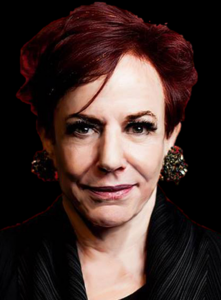History
This Trend tracks the dramatic transformation of the consumer from passive to politicized. While people used to sit back and absorb information from marketers, Faith Popcorn noticed that a new consumer was emerging – one who demanded input onto products, one who held companies accountable, and one who took control of the marketplace in new ways. She and her colleagues saw that, in the 1980s, people were beginning to protest, boycott, and otherwise make some noise. The Tylenol tamperings were one flashpoint in the 80s and matters quickly escalated. “The Company as Target” blared a headline from the 1987 New York Times, which chronicled picketers at Honeywell headquarters. As information spread through the advent of the internet, this Trend took off. Now, consumers could plug in and learn about issues all over the globe and push for change.
They could also reject traditional brands and how they were sold: The private label phenomenon was another index of consumer discontent; it exemplified the rejection of brand names. Private label sales rose 38% during a three-year period in the 1990s. Discount/off-price outlets became the fastest growing sector of retail. One-third of all groceries were bought at warehouse clubs.
What’s more, consumers became increasingly aware of the values behind brands. Ben and Jerry’s ice cream, with its 1% for Peace (an initiative they created with the goal of diverting 1% of the defense budget towards peace-enhancing activities) and Peace Pops (proceeds went towards this goal), showed how a company could represent its causes. Vigilante Consumers took note of how buying a product could express their convictions, and this behavior transformed the marketplace forever.
Practical Application
The team at Faith Popcorn’s BrainReserve put this Trend into action for an array of clients. Faith famously told McDonald’s to use their restaurants as a setting that could also offer childcare for employees’ kids and others and as well as offer English as a second language lessons, helping give immigrants a leg up in their new homeland. The futurists also helped a leading food and beverage company rethink its portfolio to sync with emerging and ongoing environmental concerns, creating an incubator for new technologies that would help resolve the microplastic crisis and also recognize and elevate consumer-led recycling efforts.
Present
The Vigilante Consumer indicators are moving off the charts. The shocking results of the 2016 election showed the restlessness and dissatisfaction of huge swaths of voters, whether they aligned with Trump’s “Drain the Swamp” messaging about moving away from entrenched political operations or whether they were young people swayed by Bernie Sanders’ idealistic message far to the left. After the election, the Women’s March showed that women were prepared to use their numbers and buying power to send a strong “no” vote to the President. Soon after, the #metoo and #timesup movements rocked the culture as men were called out, condemned and brought to justice for their abuse of power and privilege, with Harvey Weinstein as the “poster child” for all the intolerable evil that males wreak in the culture.
The power of the Vigilante Consumer is not limited to America. In Europe, the protests and pushbacks against Brexit show that the consumer won’t go quietly with government decisions that lack their best interests. Mass protests have erupted in Venezuela, where the leader of Venezuela’s opposition party, Juan Guaidó, has declared himself interim president but Nicolas Maduro remains in control of the country’s military forces. Whichever way these situations pan out, it’s clear that citizens will not sit quietly on the sidelines.
The Vigilante Consumer Trend has become an urgent one for every business, as dissatisfied consumers take to Twitter, Facebook and other platforms to voice complaints about products, ingredients, advertising and customer service. Consumer pushback has played a role in the removal of triclosan, an antibacterial in soaps, and also led to Shea Moisture, a black-owned haircare company, apologizing for using white women in their ads.
Future
As technology advances further, new avenues for protest arise. Thousands joined a virtual protest in Spain that was labeled the world’s first holographic march. Digital advances also allow the consumer to discover more issues that concern them, with apps and trackers that immediately alert them about tainted resources, foods, security breaches – and political affiliations. The latter is a key issue for the team at Faith Popcorn’s BrainReserve, which is tracking how – in these politically fraught times – brands and businesses are increasingly under pressure to declare their values and be transparent with the consumer. The “Grab Your Wallet” movement (women refusing to patronize retailers who stocked Trump-owned goods in the wake of his “grab them by the pussy” comments) was a major step towards showing that shoppers are entwining their values with their shopping dollars. The stakes will only get higher. Emo-surveillance technologies, which allow for the monitoring of behaviors, will also unleash a new tsunami of intelligence about intentions and actions, further fueling the fires of the Vigilante Consumer. Instead of Big Brother doing the watching, it will be the customer.
Trend Pairings
The Vigilante Consumer is deeply connected to the Save Our Society Trend. One can see Save Our Society as the impulse to do better as a culture, and the Vigilante Consumer as the activation.
This Trend also dovetails with AtmosFear, as many of the actions propelling the movement are triggered by harm done to the planet.





